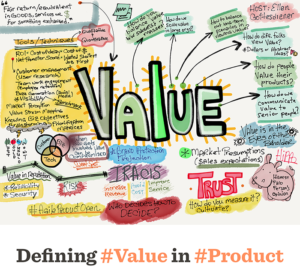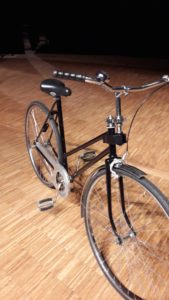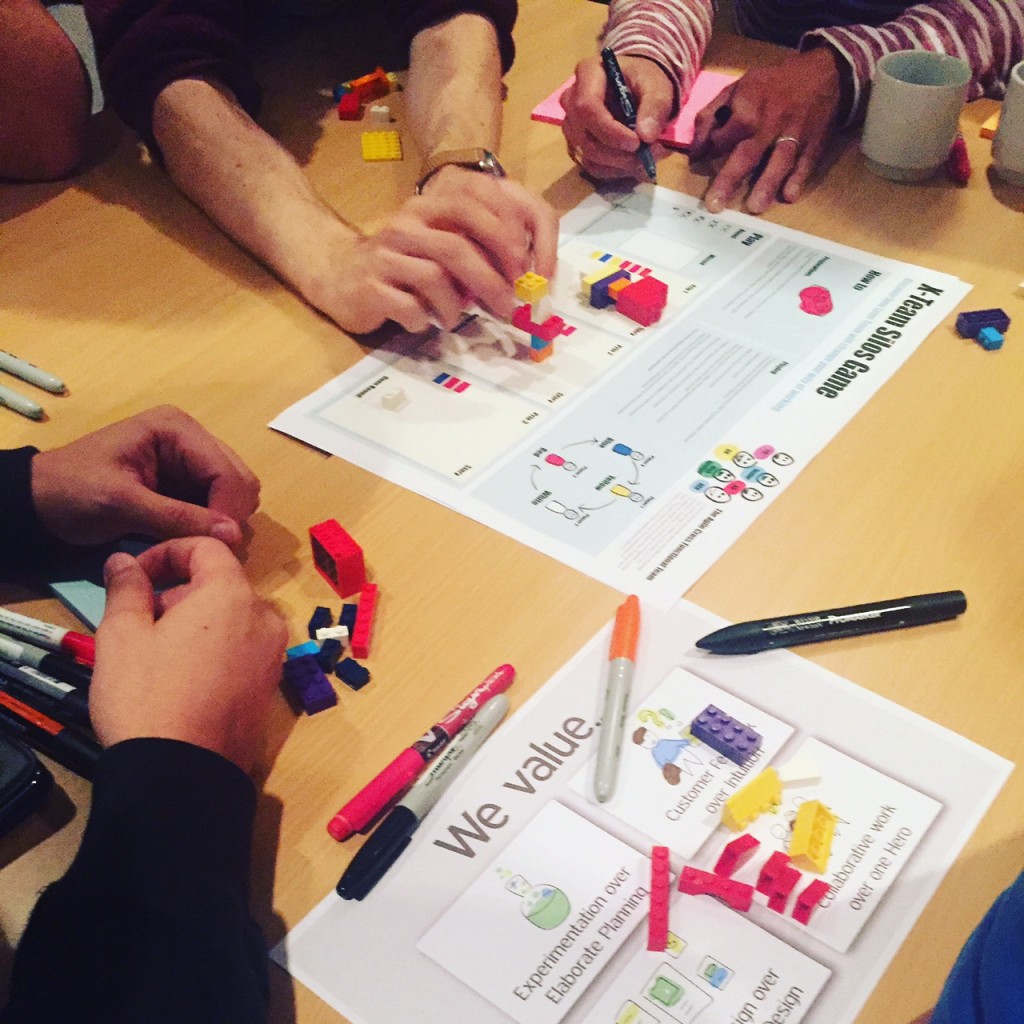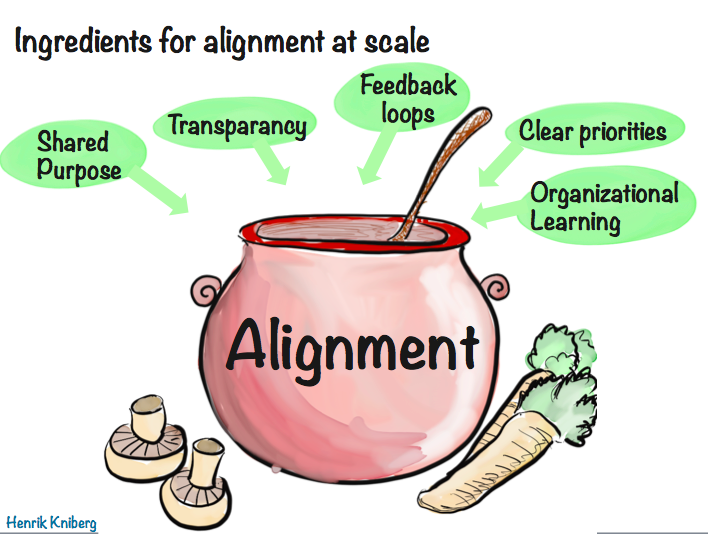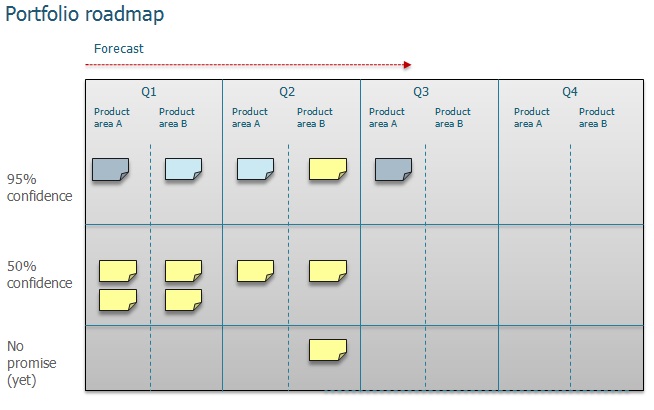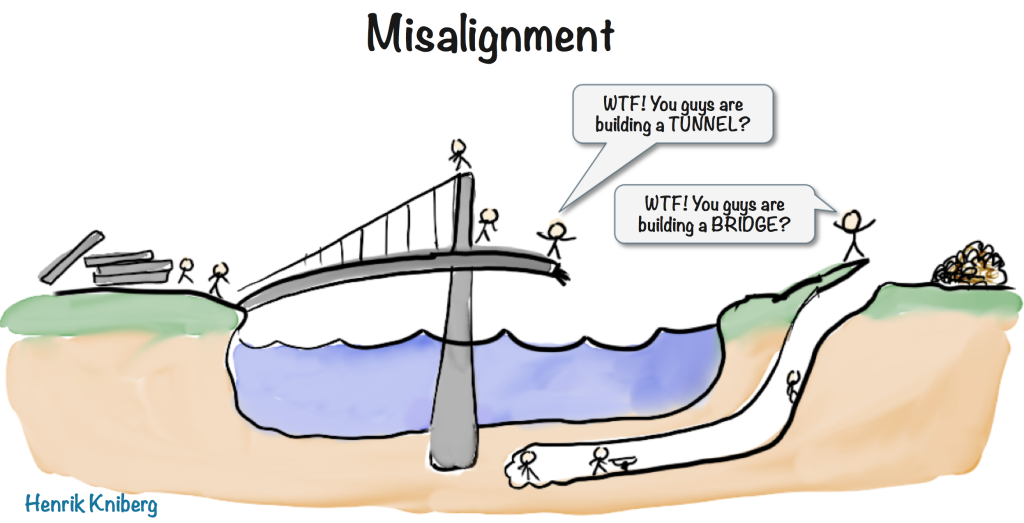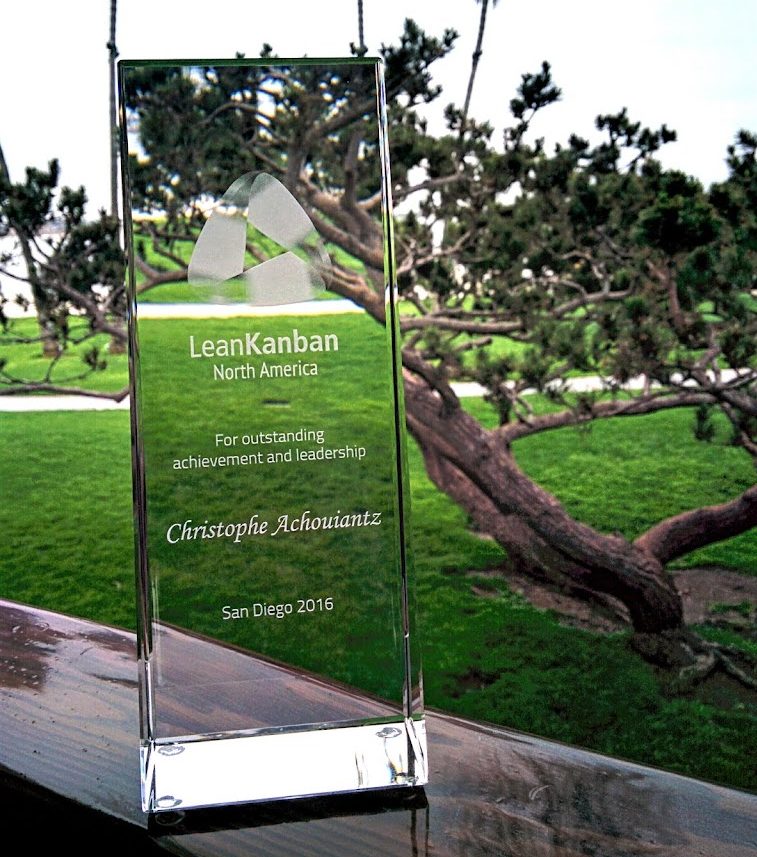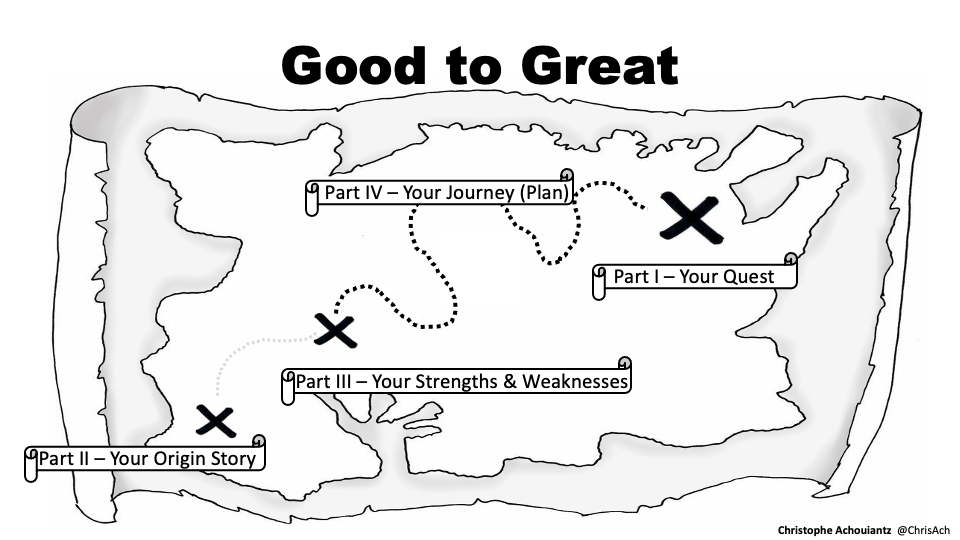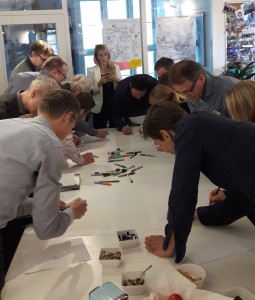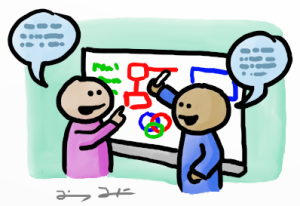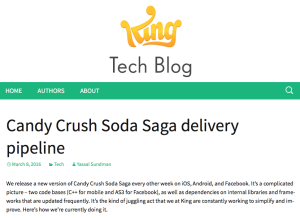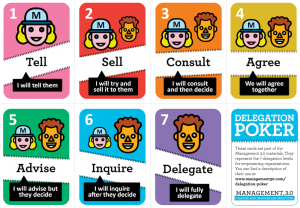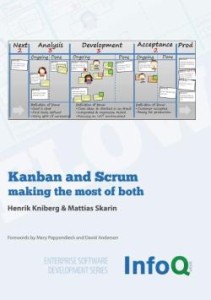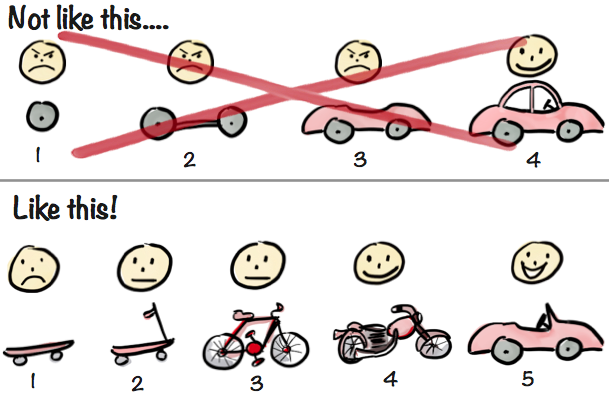In 2014 Gartner introduced bimodal IT. Since then quite a lot has been written and said about it. And just recently it popped up at two different clients almost simultaneously. After reading articles, watching webinars and listening to what people say about it, I’m a bit worried that organizations think Bimodal IT is the goal. I don’t think so, and I’ll explain why.
Continue reading
Crisp's BlogPage 10
from the Crisp Consultants
Stephen Bungay on Agile Strategy
Last month, we had the pleasure of bringing Stephen Bungay to Crisp in Stockholm to share with us his wisdom and insights on how to use Strategy under uncertain conditions. I find this topic interesting, since the interative nature of Agile can trick management into believing either that they do not need to have a
Continue readingValue: The Lynchpin in Agile Product Management
You’d think the topic of value would be straightforward when it comes to agile product management and ownership. After all, early and continuous delivery of value is the first principle in the Agile Manifesto and product backlogs need to refined based on value.
And yet, value is not easily defined, qualified, quantified, or agreed upon.
With many smart, experienced folks together at the Agile Product Open last month, I decided it would be informative to propose the topic “Value: The Whats, Whys, and Hows” in the marketplace of ideas.
To start the conversation, I offered my favorite definition, borrowed from the Value Standard: fair return or equivalent, in goods, services, or money, for something exchanged. From there, our conversation grew richer and deeper.
Riding a backwards bicycle – Keynote at Agile Islands 2016
The Agile ambition at Åland (a group of Islands between Sweden and Finland) is quite astonishing. Besides being home to a bunch of cutting edge tech companies (who have been using Agile at Scale for 8+ years), they are also experimenting with using Agile in their society. Hm, Sweden suddenly feels sooo 90’s.. I had the privilege to keynote at their first Agile conference
Continue readingWhat is an unconference?
Curious about unconferences? Perhaps you’re thinking of running one? Or maybe you are invited to an unconference or open space, and the organizer sent you this link to describe how it works? If so you’re in the right place!
This doc is a high-level summary. For more details and facilitation instructions, see the ebook How to run an internal unconference.
What is an unconference?
An unconference is basically a conference without predefined topics. There is a high level structure and theme, but actual topics are generated by the participants on the spot, and breakout groups are formed dynamically based on interest and relevance.
If you know what an Open Space is, an unconference is really just an Open Space event with some added structure at the end to make it fit for company-internal events.
This is a pretty awesome format for cases where you want a super-flexible and participant-driven agenda and structure. I’ve been using it for years at Crisp, Spotify, Lego, and other clients, and it tends to spread virally within organizations. I’ve done it mostly with groups of 20-80 people, and people often say things like “all conferences should be like this” or “best conference I’ve ever been to!”
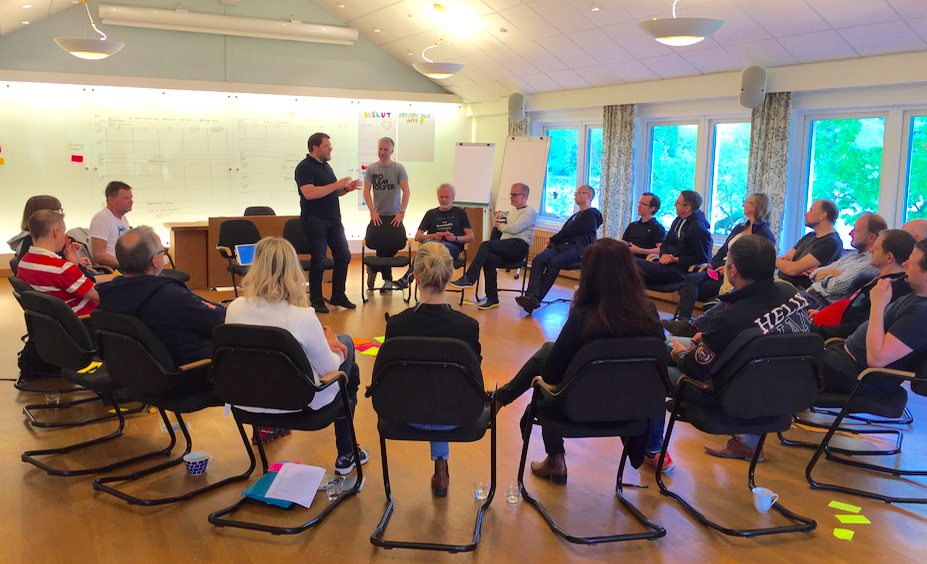
X-team Silos Game – getting in T-shape
Cross functional teams are complete in expertise but not necessarily collaborative. Sometimes team members hold on to their expertise too much and the team does not perform to its potential. This Lego game illuminates the difference when members allow themselves to take on tasks outside their expertise, being so called T-shaped. Play the game to kick-start your change and create collaboration.
Alignment at Scale – slides from my Agile Africa keynote
Here are the slides from my Agile Africa keynote Alignment at Scale (or How to Not become Totally Unagile when you have Lots of Teams). Thanks for a great conference!
And thanks everyone for the Emma greeting, that sure made an 8 year girl very happy 🙂
(Emma was supposed to join me on this trip, but couldn’t make it because I had missed some required paperwork for travelling with minors to South Africa).
Introducing Lottie Knutson – speaker at Fastfeedback 2016
During extraordinary situations and crises, some people stand out and shine. One of these was Lottie Knutson. Lottie led the Crisis team at Fritidsresor during the Tsunami disaster in 2004. While governments were struggling to figure out what had happened, Lottie’s team was already hitting the ground running. Lottie will be speaking at Fast Feedback
Continue reading10 kanban boards and their context updated – v1.5
Hi! I’ve updated the Kanban boards collection with examples from departements outside IT, Product portfolio and Corporate Legal. Download “10 kanban boards and their context” as pdf
Continue readingSpotify Rhythm – how we get aligned (slides from my talk at Agile Sverige)
Here are the slides from my talk about Spotify Rhythm at Agila Sverige.
The talk is about Spotify’s current approach to getting aligned as a company. It covers:
- what problem we’re trying to solve, and how we’ve gone through two other models (OKR and Priorities & Achievements) before arriving at our current model
- how we define “Bets” using the DIBB framework (Data-Insight-Belief-Bet)
- how we prioritize bets using stack-ranking based on company beliefs and north star goals
- how we visualize bets on a kanban-like company level board, and group them into Now – Next – Later columns
- how different parts of the company visualize their own bets and align with higher level bets, using interlinked bet boards.
- how we synchronize and prioritize our work using different cadences at different levels of the company.
- how this model is used to support squad autonomy
- our challenges and learnings with this so far
Holy crap how did I manage to cover all that in 10 minutes?! Guess I talked fast 🙂
Some sample slides below.
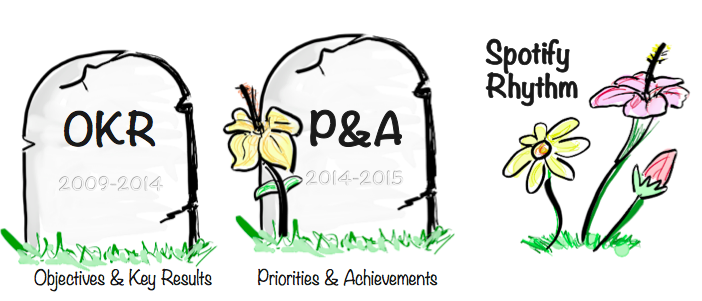
SAFe @ LEGO – Video from LKCE 2015
Hi! Here’s the video of our presentation “Learnings from SAFe @ LEGO” at LKCE 2015. psst: Meet LEGO f2f at this years Fastfeedback conference 2016 (Stockholm, Sept 21-22:nd). This years focus topic is “Strategy – Turning insight to action”. fastfeedback.se Cheers Mattias
Continue readingMore with LeSS: The Third Large-Scale Scrum Book
Based on the experiences with clients adopting Large-Scale Scrum, from 2007 to 2009 Bas Vodde and I wrote the first two books on LeSS:
- Scaling Lean & Agile Development: Thinking and Organizational Tools for Large-Scale Scrum
- Practices for Scaling Lean & Agile Development: Large, Multisite, and Offshore Product Development with Large-Scale Scrum
These are a collection of experiments related to Large-Scale Scrum, organized into three major sections: experiments in thinking tools, organizational tools, and action (practice or technique) tools.
And now, almost a decade after starting our first book on scaling agile development, comes our third book: Large-Scale Scrum: More with LeSS.
Slides from “Agile at scale”
Here are the slides from our evening event Agile at scale that took place at Crisp on May 11th. Thanks everyone who attended for making this a great evening event!
Continue readingWon the Brickell Key Award 2016!
Wow, just Wow!I am very honored to have won the Brickell Key Award 2016! Actually, very glad, surprised and humbled. The competition was impressive, if possible even more so than two years ago when I was first nominated. I want to thanks the Kanban community, David Anderson for his inspiration, Sandvik IT for their trust and
Continue readingFrom Good-Enough to Great: the Workshop
Here comes the slides from the Workshop I’ve held at the Lean Kanban North America 2016 conference in San Diego: From Good-Enough to Great from Christophe Achouiantz What the Workshop is about From good-enough to greatYou’ve had some success with you Kanban System: you’ve managed flow and quickly increased your capability. But now the energy
Continue readingInsights from Nordics first Agile contracting conference
OK, technically speaking, it was called a networking day. But that wouldn’t do justice to the content here. The main thing we got out of the ACPN Agile contracting conference was the three different perspectives from lawyers, customers and providers. That gave us a unique insight into the challenges and questions from each party. Some cool facts: Founders
Continue readingSlides from Agile Testing Day Scandinavia
In this talk I presented a simple 2D platformer written in Java/Groovy and how to use Spock to test it. I’ll make the source code available in a while. By the way, of you’re not using Spock yet, then start!
Continue readingGrowing up with Agile – Minimum Viable Bureaucracy at Spotify
The Spotify ‘model’ was presented in 2012 and has stired a lot of interest in the agile community and the software industry in general. In May I was asked to talk about this a the Bay Area Agile Leadership Network meetup in San Francisco (where I at that time was working as an agile coach
Continue reading12 seemingly normal things Agile people do
Last week, I got this great question from Faraz (a manager for an energetic customer support crew) who is experimenting a lot with getting more Agile. “What seemingly normal things do Agile people do?” I realized that we rarely talk about the small things that effective Agile people do. What makes a great difference is rarely the big sweeping change programs, but rather, the small everyday things we do without thinking about it.
So here’s a list of 12 seemingly normal things Agile people do which we don’t pay much attention to that can make a big difference.
Whiteboard problem solving
Better meetings with the Core Protocols

Good meetings is very much about achieving deep collaboration. But collaboration is often hard. We go into meetings with different modes, intentions, and expectations. How can we make meetings both more fun and energetic? Surprisingly enough: maybe by being more formalized.
Continue reading
#slowtofast podcast with Nordnet CIO Dennis
Hi! I recently did a podcast together with Dennis (CIO Nordnet) on #slowtofast. I walked into the podcast thinking it was going to be about Kanban and Enterprise Agile. Right! 🙂 Dennis hit me with these simple questions.. The essential elements of proper Product Management The management principles of an Agile leader How the Swedish culture is
Continue readingContinuous Discovery and Validation
Continuous discovery means an open backlog where everything is considered speculation and hypothesis. Continuous validation means that the user experience is validated for each release, rather than up front. This may sound like big budget to you, but let me give you a case study, about how a single team accomplished it on a tight budget.
A small team with a small budget has the advantage of not losing its head with big ideas from experts in different fields, be it architecture or user experience. The budget constraint sharpens your effort in a way that could be healthy even to a larger team.
Agile @ Lego – our slides from Passion for Projects
UPDATE Dec 2016: Wrote an article about LEGO’s agile journey, see here. Includes all of the material below, plus explanations and updates.
Here are the slides for our talk Agile @ Lego at Passion for Projects in Uppsala. Enjoyed discussing this stuff with project managers and the like from all sorts of industries. A common theme from the conference was the power of self-organization, and the role of leadership in creating the right context for self-organization to happen. Our talk provided a real-life large scale example of this.
The Candy Crush Soda Delivery Pipeline
Candy Crush Soda releases a new version of the game on all platforms every other week, year round. I’ve written about the delivery pipeline and the challenges the team faces on King’s tech blog: https://techblog.king.com/candy-crush-soda-saga-delivery-pipeline/ Previous posts about working with the Soda team: How We Developed Candy Crush Soda Saga What Should We Build Next? Get in touch
Continue readingUsing a delegation board to foster collaboration
I’m currently coaching a team with several stakeholders in different parts of the organization. It’s difficult to know who to talk to when decisions need to be made. The line between what the team can decide about and what the stakeholders need to be involved in is also blurry. To help create more clarity and a better collaborative environment with our stakeholders we decided to create a delegation board. The meetings we ran this week were appreciated by everybody, so I thought I would share what we did and what we learned.
Kanban and Scrum – now with Polish translation!
The Kanban and Scrum minibook is now available with Polish translation. Great thanks to Zbigniew Zemla for the translation! Pobierz tutaj (aka polish for “get it here” ): http://www.infoq.com/minibooks/kanban-scrum-minibook Cheers Mattias
Continue readingMaking sense of MVP (Minimum Viable Product) – and why I prefer Earliest Testable/Usable/Lovable
(French translation, Spanish translation, Japanese translation)
A couple of years ago I drew this picture and started using it in various presentations about agile and lean development:
Since then the drawing has gone viral! Shows up all over the place, in articles and presentations, even in a book (Jeff Patton’s “User Story Mapping” – an excellent read by the way). Many tell me the drawing really captures the essence of iterative & incremental development, lean startup, MVP (minimum viable product), and what not. However, some misinterpret it, which is quite natural when you take a picture out of it’s original context. Some criticize it for oversimplifying things, which is true. The picture is a metaphor. It is not about actual car development, it is about product development in general, using a car as a metaphor.
Anyway, with all this buzz, I figured it’s time to explain the thinking behind it.
The importance of size and proximity
We have translated our blog on team size and proximity to english. If you prefer to read it in Swedish it’s called Storlek och närhet har betydelse. The english version you’ll find at Nomad8 site, because Jimmy Janlén is currently in New Zealand. 🙂
Continue readingContinuous Delivery of custom WordPress using Vagrant, Ansible and AWS

The www.crisp.se website is based on WordPress, with a custom Crisp theme.
This is the story about how we’ve developed our custom WordPress theme, how we’ve made it easy for any Crisper and external consultants to work on the theme, how we’ve setup version control, continuous delivery, staging and production environments on Amazon Web Services (AWS). And how all of this is setup with absolutely no automated tests whatsoever.


